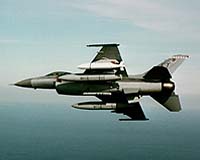 |
American Forces Press Service Washington DC (AFPS) Dec 10, 2010 As the number of improvised explosive device attacks rises in Afghanistan, a combination of strategies and technologies are being used to halt the harm they cause to troops and civilians, Army Lt. Gen. Michael L. Oates said this week. Oates, director of the Joint IED Defeat Organization, known as JIEDDO, spoke with reporters during a Dec. 6 briefing at the Foreign Press Center in Washington. "We are essentially attempting to find a fertilizer-based bomb, so it has very low or no metallic content, and it is buried in an unimproved road, in the dirt," Oates said. Military-grade munitions are harder to come by in Afghanistan than they are in Iraq, he said, and an abundance of fertilizer is available for use in homemade explosives. "It's easier and it works," Oates said, "so there's no particular reason to change that model." But detecting fertilizer-based devices "requires a very sophisticated combination of factors," he added. Metal detectors don't work against these crude but efficient devices, which have risen from only a few in the first seven years of the war in Afghanistan to 1,300 to 1,400 events a month over the past 18 months, as the number of coalition troops has surged there. Instead, Oates said, coalition forces have had some success in detecting the residue of homemade explosives before they are buried underground. "Dogs are very successful at locating most forms of explosives, and so we have increased the number of explosive-detection dogs in theater," he said. There are more unmanned aerial vehicles in Afghanistan now than there ever were in Iraq, Oates said, noting the "significant volume of UAVs" in the air there with remote-sensing capability. Airborne platforms also can help detect disturbances in the earth that may give clues about the locations of IEDs, he said. For example, if a command wire is used in the IED detonator, that may be detected from the air. Ground-penetrating radar also offers an ability to see things buried beneath the surface. "We still have more work to go on that technology," Oates said, "but it is providing some useful help." A range of other radars also are being explored to look for devices buried underground. "What was new in Afghanistan this year was the introduction of what we call persistent ground surveillance, PGS, and persistent threat detection [system], PTDS," Oates said. Persistent surveillance includes a range of functions, but the newest capabilities, he said, include a blimp that can rise to a height of about 3,000 feet with a long-range camera that watches the roads day and night through most weather conditions. Cameras mounted on towers do the same thing. "We've put almost 50 of these systems into theater and we have more coming," Oates said. "All of these things are either currently in theater or moving there as soon as we can get them there," he added. But Oates said he doesn't want to oversell the ability of technology alone to detect IEDs. "This is a very difficult bomb to detect using technology. We find that well-trained soldiers armed with dogs tend to be the most effective in finding IEDs, but they are facilitated with other forms of technology," he said. "The airborne platforms allow you to understand what is going on within the enemy network and that's helpful to understanding where to look for the bomb. Our other intelligence capabilities allow us to do the same," he said. "But unless you employ all of these capabilities, it is very, very difficult to find these explosives," Oates said.
Share This Article With Planet Earth
Related Links Joint IED Defeat Organization The latest in Military Technology for the 21st century at SpaceWar.com
 RAAF Is First US Ally To Employ JSOW C
RAAF Is First US Ally To Employ JSOW CWoomera, Australia (SPX) Dec 09, 2010 The Royal Australian Air Force launched two Raytheon Joint Standoff Weapon Cs from the RAAF's new F/A-18E/F Super Hornet, marking the first time a U.S. ally has operationally tested a JSOW C. This test series also marked the first time the JSOW C variant has been employed outside the continental United States. The RAAF also has placed an order for the JSOW C-1, which is currently in produc ... read more |
|
| The content herein, unless otherwise known to be public domain, are Copyright 1995-2010 - SpaceDaily. AFP and UPI Wire Stories are copyright Agence France-Presse and United Press International. ESA Portal Reports are copyright European Space Agency. All NASA sourced material is public domain. Additional copyrights may apply in whole or part to other bona fide parties. Advertising does not imply endorsement,agreement or approval of any opinions, statements or information provided by SpaceDaily on any Web page published or hosted by SpaceDaily. Privacy Statement |